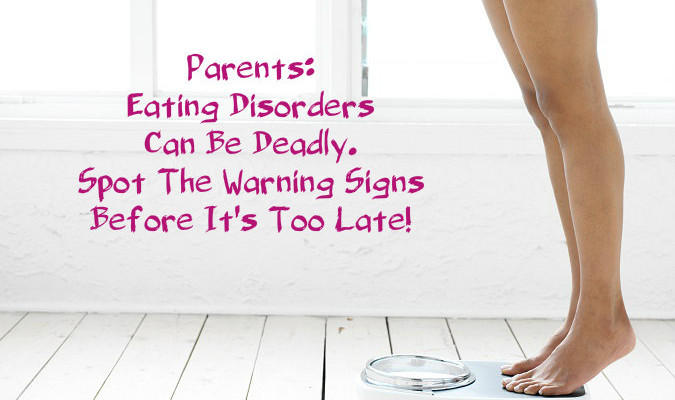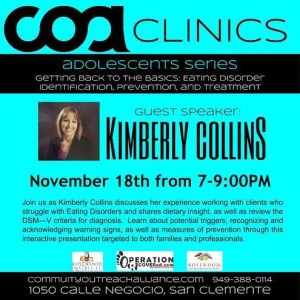Eating Disorder Identification, Prevention, and Treatment
Let’s face it, our lives are so busy sometimes that we occasionally push meals to the side. We are often so busy that we don’t notice how we may be depriving ourselves of balanced, nutritional meals. Or perhaps, as parents, we are too busy to notice the change in eating habits of our 12-year old daughter who is struggling to fit in at  school and is beginning to look at herself a little more closely in the mirror. How about Tommy, the junior varsity high school football player who’s worked so hard to gain weight by eating high calorie foods in large amounts? Which one of these cases is considered an eating disorder? I can go on identifying real life cases, the ones eating disorder professionals see on a daily basis. The harsh reality is that eating disorders are running rampant in our modern society, they can be hard to detect, and unfortunately awareness is not spreading as quickly as it should.
school and is beginning to look at herself a little more closely in the mirror. How about Tommy, the junior varsity high school football player who’s worked so hard to gain weight by eating high calorie foods in large amounts? Which one of these cases is considered an eating disorder? I can go on identifying real life cases, the ones eating disorder professionals see on a daily basis. The harsh reality is that eating disorders are running rampant in our modern society, they can be hard to detect, and unfortunately awareness is not spreading as quickly as it should.
 Many eating disorders have been studied and classified according to how they present and progress. And although some, such as anorexia nervosa and bulimia nervosa, are different, they can share certain common symptoms that might make them easier to be identified. Some telltale signs include individuals who begin to see their food as the enemy. They pick at their plate at dinner or throw away most of their meal. You may also notice a change in their appearance or behaviors. Unfortunately, in most cases, by the time anyone notices, the condition has gotten to a point where medical intervention is critical.
Many eating disorders have been studied and classified according to how they present and progress. And although some, such as anorexia nervosa and bulimia nervosa, are different, they can share certain common symptoms that might make them easier to be identified. Some telltale signs include individuals who begin to see their food as the enemy. They pick at their plate at dinner or throw away most of their meal. You may also notice a change in their appearance or behaviors. Unfortunately, in most cases, by the time anyone notices, the condition has gotten to a point where medical intervention is critical.
Fortunately, however, research studies conducted in the past couple of decades have led to various successful treatment methods. Nowadays, there are many treatment options for eating disorders, including residential programs and outpatient programs. Because eating disorders can often be associated with an underlying mental illness, treatment may include a combination of cognitive behavioral therapy, psychiatric evaluations, nutrition planning, and support groups. Many programs may also offer art therapy, psychotherapy, and meditation.
 Now, we know a little bit about what eating disorders are and how they can be treated, but the question remains, can they be prevented? Is that even possible? Even the most notable researchers and influential clinicians remain skeptical about the possibility of effective prevention. However, there is some advice that most will agree upon. For adolescents, parents can begin by modeling proper eating habits, talking to their children about the results of poor eating choices, and learning how to not criticize body shapes and images. What other prevention methods are there? What more can we learn about eating disorders?
Now, we know a little bit about what eating disorders are and how they can be treated, but the question remains, can they be prevented? Is that even possible? Even the most notable researchers and influential clinicians remain skeptical about the possibility of effective prevention. However, there is some advice that most will agree upon. For adolescents, parents can begin by modeling proper eating habits, talking to their children about the results of poor eating choices, and learning how to not criticize body shapes and images. What other prevention methods are there? What more can we learn about eating disorders?
We invite you to explore these topics with Kimberly Collins, MS, RD, CDE, Registered Dietitian of the Adolescent Unit at Rosewood Centers for Eating Disorders. In her presentation, “Getting Back to the Basics: Eating Disorder Identification, Prevention, and Treatment”, Kim will share her dietary insight, discuss potential triggers, warning signs, measures of prevention, treatment guidelines, and will review the DSM—V criteria for diagnosis. This interactive presentation is offered to both families and professionals who would like to learn more.
Kim will be presenting on Wednesday, November 18 from 7 pm to 9 pm MST at 1050 Calle Negocio San Clemente, CA 92673. Bring a friend or family member. All are welcome.
Kim is a Registered Dietitian and Certified Diabetes Educator that came to Rosewood with years of experience working with adolescent and adult clients. She has her Masters Degree in Dietetics with an Emphasis in Counseling, which has assisted in working with the Eating Disorder population. Kim has specialized diabetes knowledge and is able to individualize nutritional care while assisting with the management of blood sugars. Kim takes a realistic approach to meal planning and combines that with the standards of practice for nutritional care. She finds seeing the progress and changes in an adolescent, from the day they admit to the day the discharge home, the most rewarding part of her working at Rosewood.





